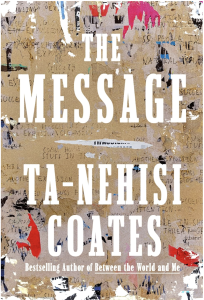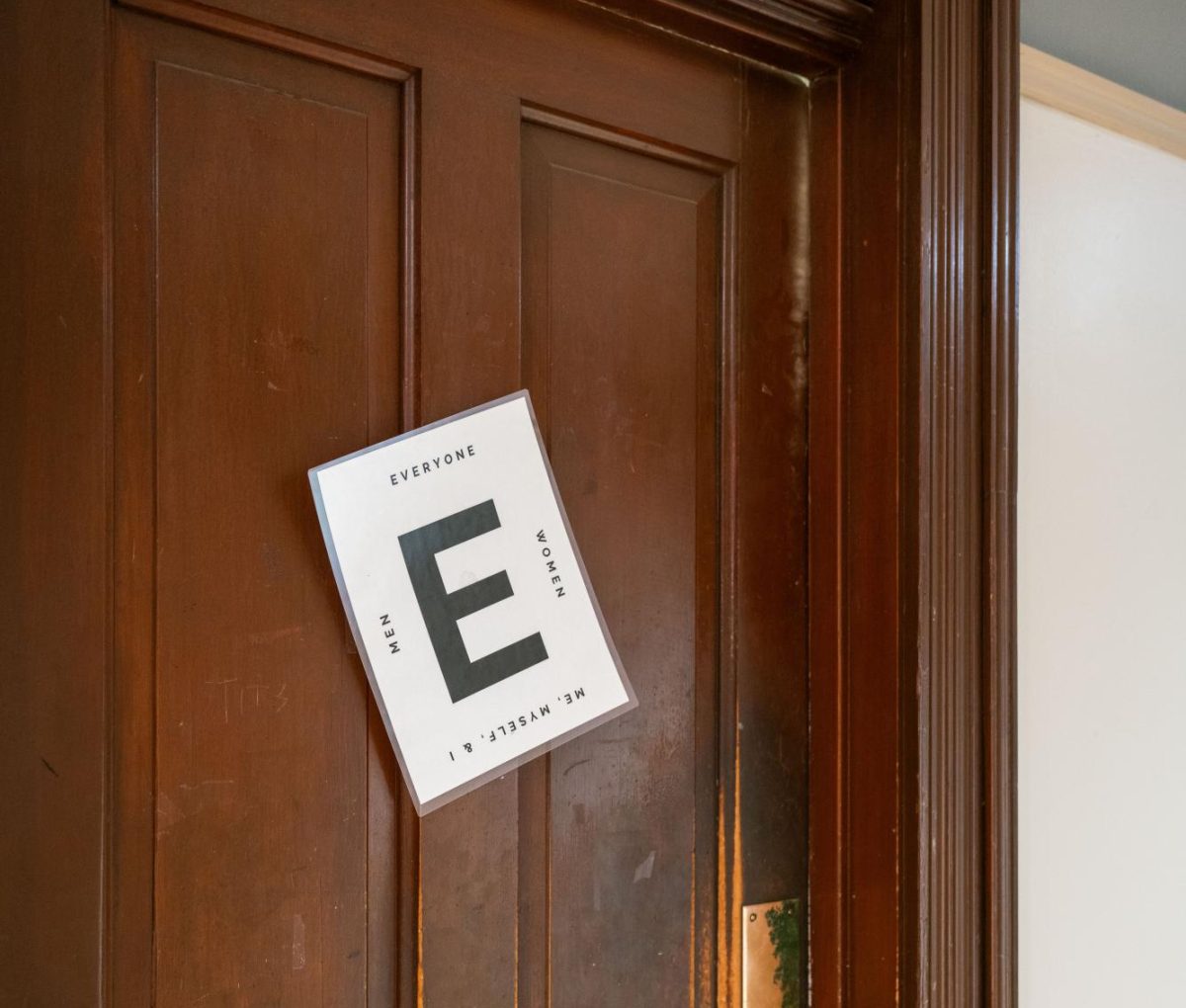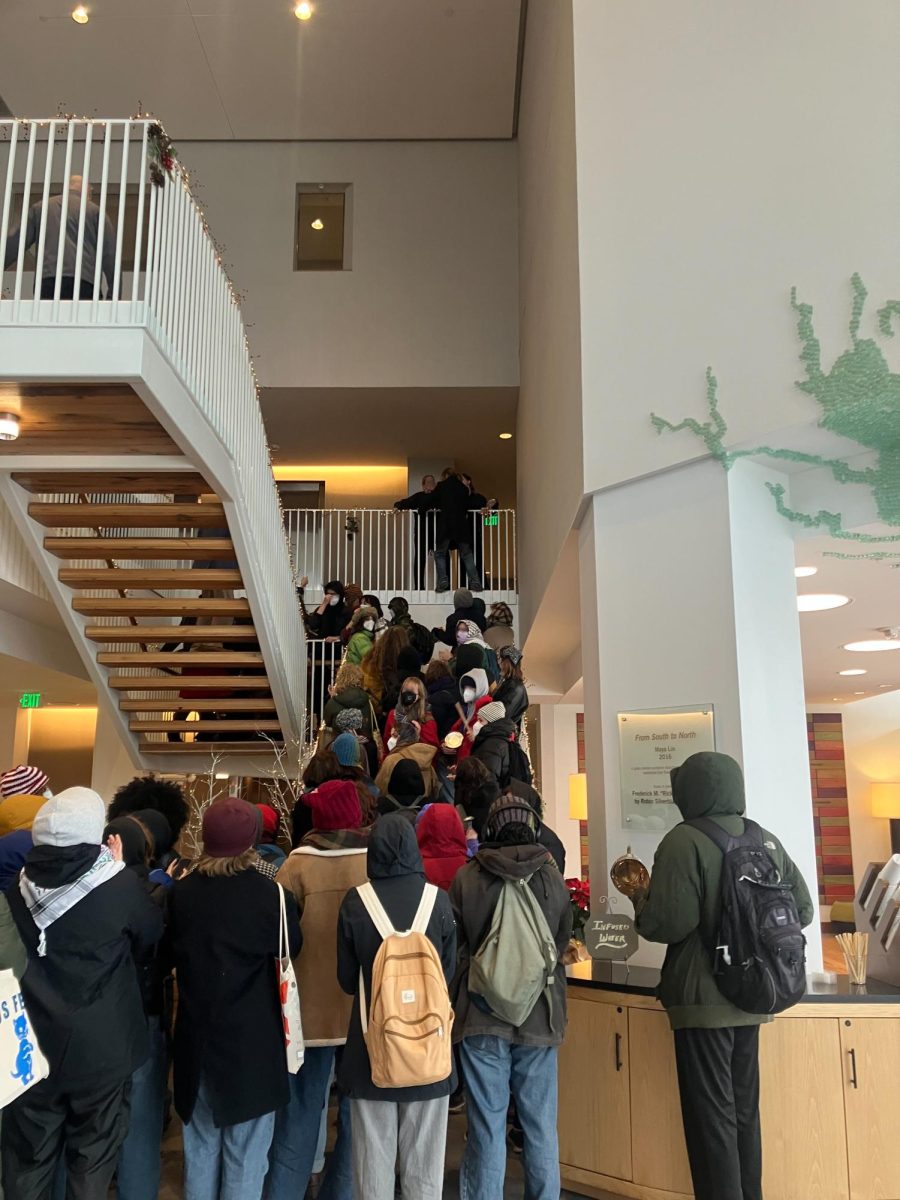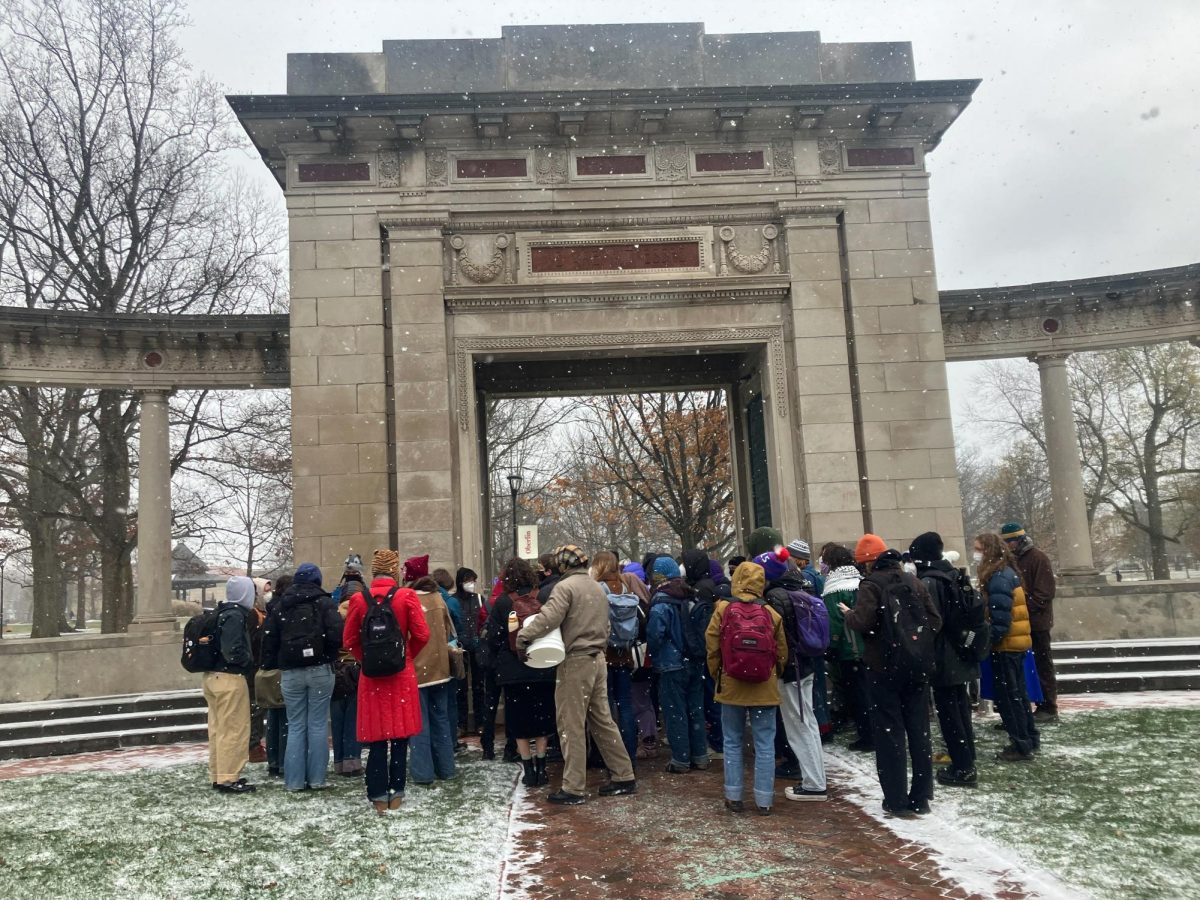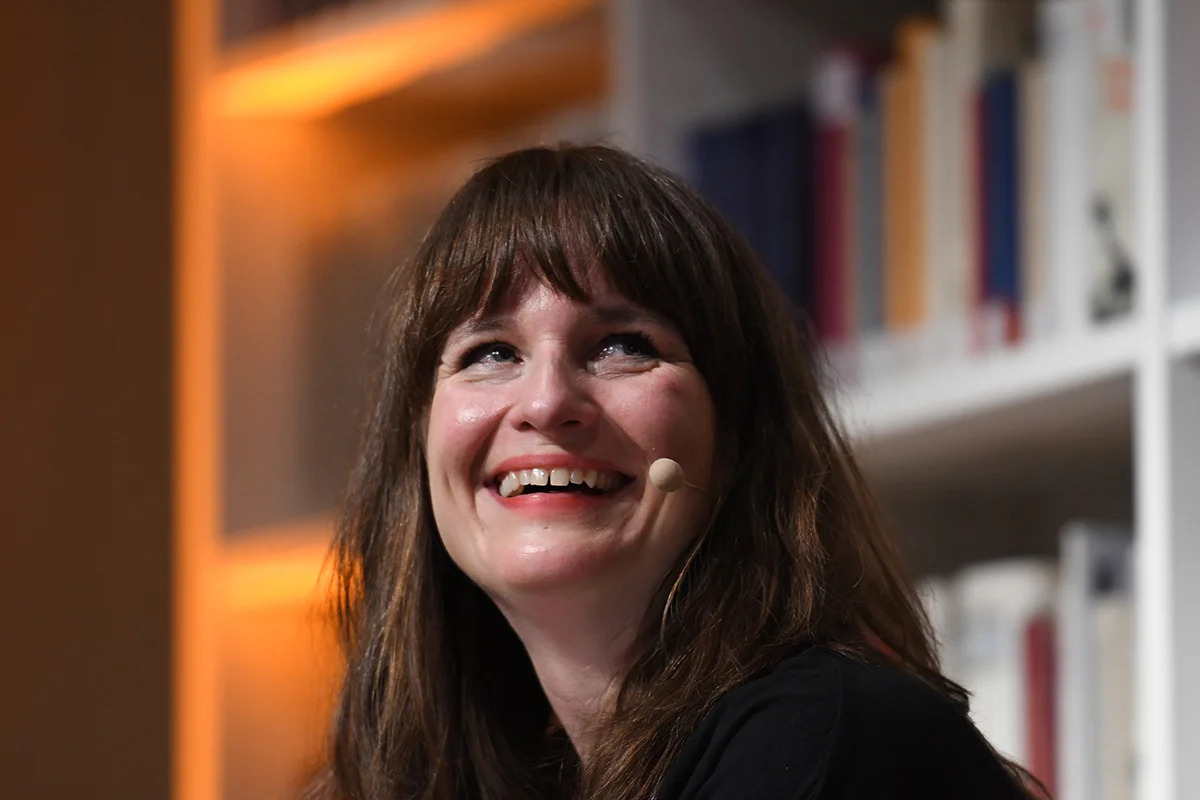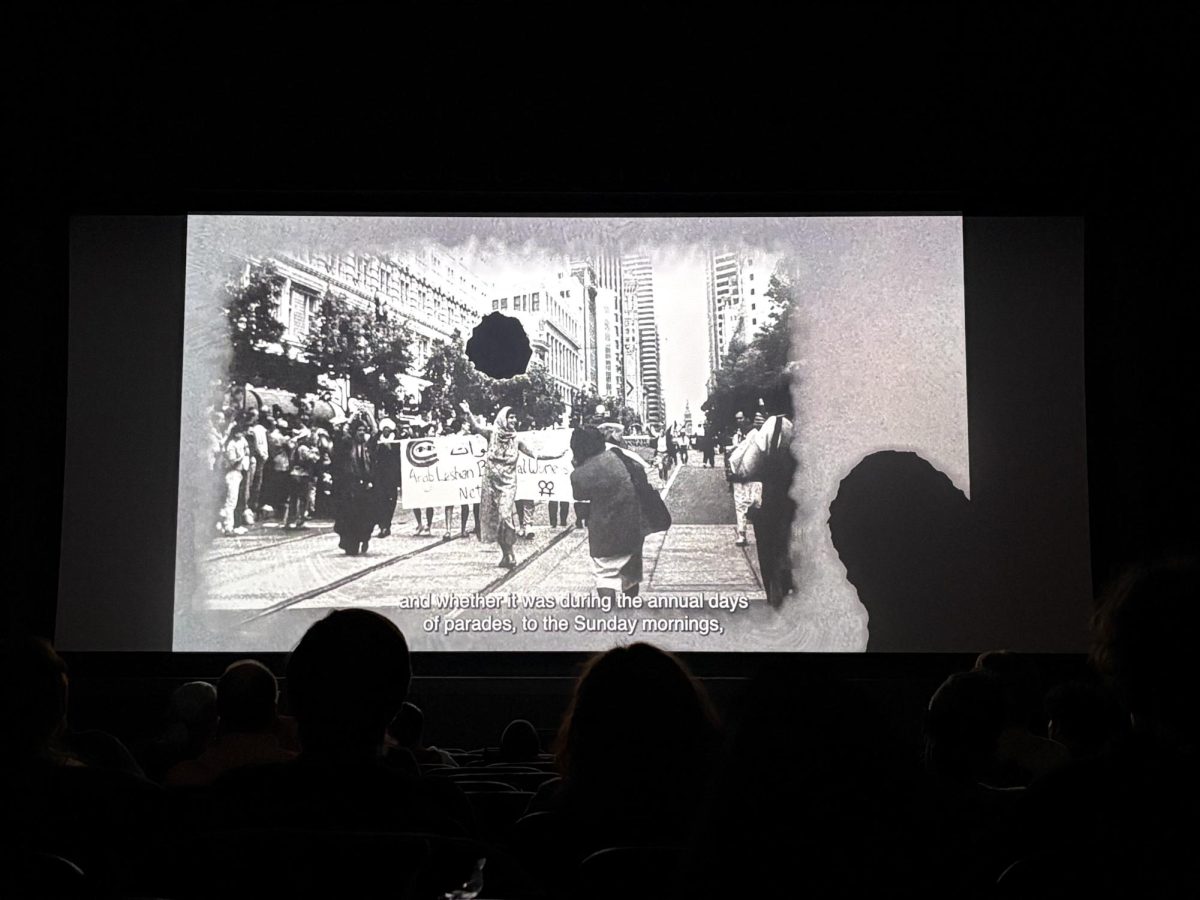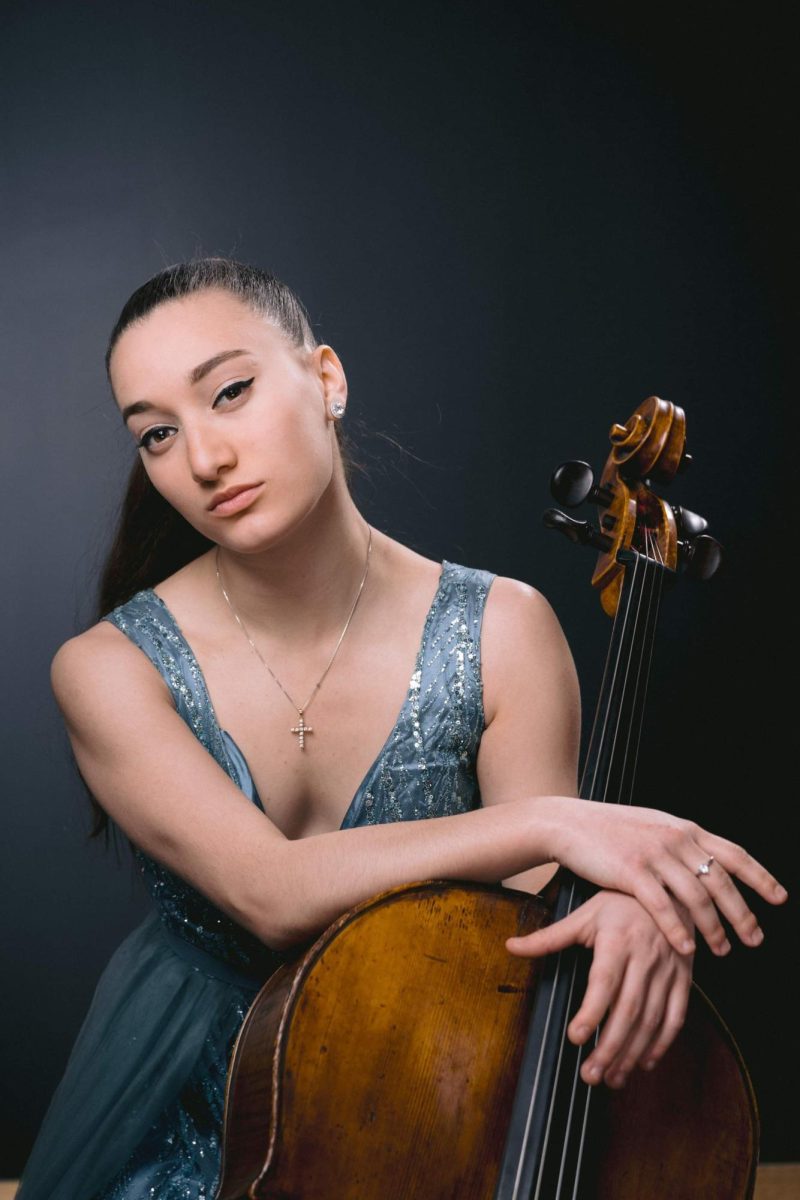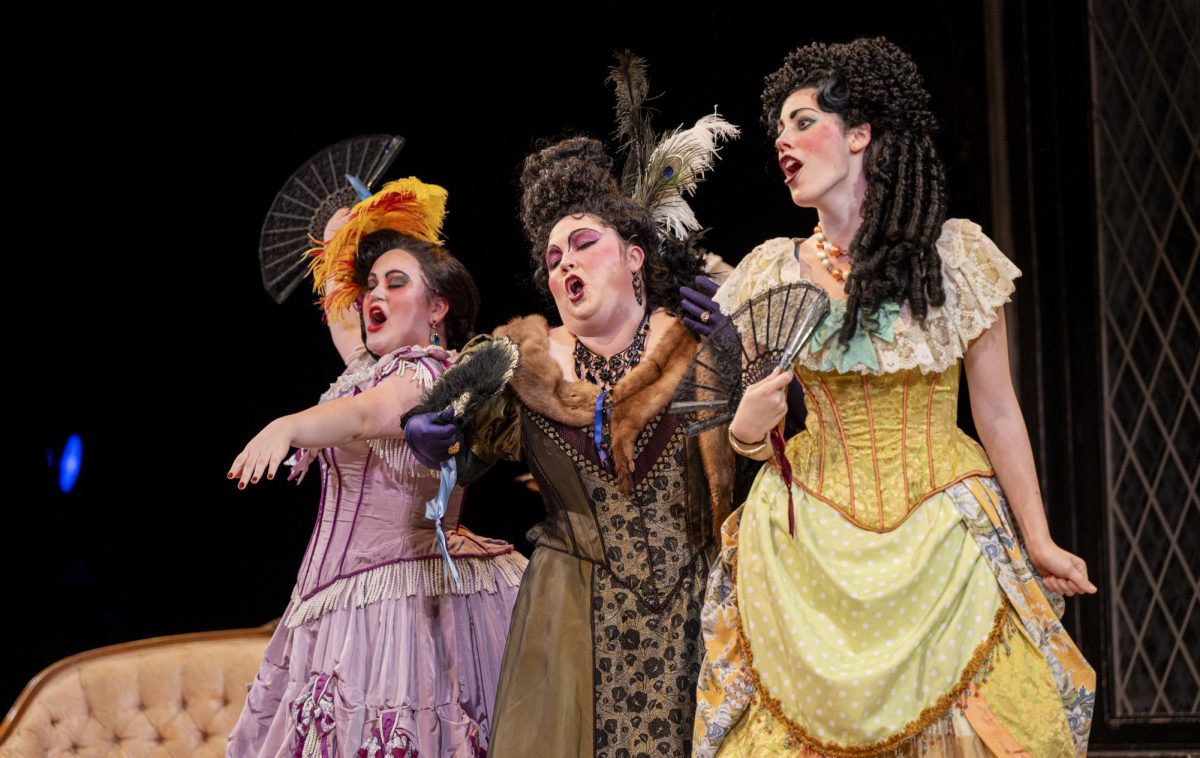Production of The Promise Reveals Flaws, Strengths
December 13, 2013
Alexei Arbuzov’s play The Promise opens on a room in a Leningrad apartment. Lika, played by College Senior Aily Roper, a young girl who’s not yet 16 years old, huddles on a couch under piles of blankets, the cold palpable. The sounds and flashing lights of artillery fire break the calm. It is the spring of 1942. Leningrad is a city under siege.
In that bleak setting, well-evoked by the gorgeous set and lighting design, Lika meets two young men who come to the apartment. Marat (College senior William Hofmann), whose family lived in the apartment before the siege began, immediately takes charge, staving off fears for the future by exerting what control he can over the present. And there’s Leonidik (College senior Linus Ignatius), a sickly, idealistic poet. The three struggle to coexist and adapt to war-torn Leningrad in the first act, and the rest of the play traces the development of their relationships — a kind of love triangle — through the next 17 years.
Saturday’s production, directed by Associate Professor of Theater Paul Moser, evoked the dramatic setting of the siege of Leningrad through lighting and sound design. But there was a strange dissonance between the stakes for the characters and the setting. One would expect a meeting of two strangers in a private home during a siege to be a tense and fraught affair, but through much of the first scene, the stakes seemed rather low. Some of the blame for this should be placed on the lackluster script, which suffered from poor pacing and, at times, unbelievable dialogue, which also occasionally conflicted with the staging. At one point during the tense first scene, Lika asks Marat, “Why are you laughing at me?” A confusing question, since he was not in fact laughing.
Roper and Hofmann also struggled to portray the sexual and romantic tension between Lika and Marat, which did not become believable until Marat’s return from war as a hero of the Soviet Union in the second act. Ignatius’s Leonidik was perhaps the most believable of the three, combining a naïve idealism with careful delivery that extracted meaning from the script. When Leonidik returned from war with a prosthetic arm, Ignatius also convincingly portrayed the uselessness of the appendage.
The play found its footing when it successfully conveyed what it was to be a Soviet citizen during World War II and after. The raked stage set and costumes were both convincing in this regard, not to mention beautiful. The production showed the passage of time by changing the ways that characters dressed — bundles of ragged winter clothing in the first act which gave way to military uniforms and sensible civilian clothing in the last two acts — while adding to and rearranging the furniture in the apartment. Although a way to mark the passage of time, the raked stage appeared at times to interfere with the actors’ movements.
During the scene changes, poignant images of wartime Leningrad were projected onto the set. This was an interesting technique used to increase the audience’s awareness of how the characters’ lives and struggles fit into the greater context of the Soviet Union as a whole, and how they overcame the hardships of World War II while still oppressed by Stalinism. But there were problems with the execution: By the time the pictures were projected onto the uneven backdrop of the set, they were quite pixelated, and they also detracted from the play’s attempts at immersive realism by exposing the scene changes. In the end, the decision to project the images seemed inconsistent with other aspects of the production, although many of the images were quite affecting.
The Promise may suffer from being separated from its original context, written during the post-Stalinist thaw when Soviet artists and intellectuals were first permitted to question the official narratives on the war and on Soviet life. It is clear that as the play’s three characters attempt to make lives for themselves in a 1940s and ’50s Soviet Union, they carry with them the scars and bonds forged by the brutal siege. But the social commentary now seems diluted and the script longer than it needs to be, leaving the viewer to wish for more concrete and critical engagement with the issues that The Promise tackles.


